 web3.0
web3.0 Dismantling ZetaChain: Why is 2024 said to be a great year for the development of the 'chain abstraction' track?
Dismantling ZetaChain: Why is 2024 said to be a great year for the development of the 'chain abstraction' track?Recently, the cross-chain interoperability L1 public chain @zetachain released an airdrop, which attracted market attention to the "chain abstraction" track. What is chain abstraction, what are the difficulties in full-chain interoperability, and what are the core features of zetachain? In my opinion, if modularization is a "vertical integration" strategy, then chain abstraction is a "connection horizontal" strategy, which is one of the key tracks that must be paid attention to in 2024. Why, next, let me talk about my understanding:
Whether it is a vertical alliance or a horizontal alliance, it is an "alliance" strategy. Modularization is the combination of scattered blockchain development capabilities in the form of modular components to cope with comprehensive large-scale public chains. Chain abstraction integrates the liquidity scattered among different chains in the form of interoperability to improve the experience of developers and users. This integrated approach can enhance the flexibility and scalability of the blockchain while promoting cooperation and interaction between different chains.

What is chain abstraction?
Recently, the co-founder of Near proposed the concept of "chain abstraction". Simply put, chain abstraction is the modular separation of different functional layers of the blockchain, such as settlement layer, DA layer, execution layer, Rollup layer, etc. The introduction of this concept has greatly promoted the prosperity of the chain construction market. However, at the same time, chain abstraction also brings some problems. First of all, liquidity, applications and users among different chains have become more dispersed, which has brought huge barriers to ordinary users and developers. This means that users and developers need to learn more and adapt to different chain abstraction modules. Although chain abstraction has brought prosperity to the chain building market, there is also a need to find a balance between decentralization and threshold.
Chain abstraction is to solve problems such as cross-chain communication, asset transfer, and smart contract invocation between different chains by building a universal all-purpose smart contract. It provides a standardized way so that different chains can connect and interact with each other, thereby achieving more efficient and secure cross-chain operations.
There are two main common chain-wide interoperability issues:
1) Communication issues between non-similar smart contract chains, for example, how to use UTXO non-smart contract platforms such as Bitcoin Establish an effective communication connection with account smart contract platforms such as Ethereum?
The Wrap method is currently a commonly used cross-chain bridge solution, but it has problems with high handling fees and capital loss, and is also accompanied by greater centralization risks in asset multi-signature management. Therefore, it is necessary to find a non-Wrap method for cross-chain asset transfer solutions. This solution can reduce handling fee friction and capital loss, while reducing centralization risks and improving the efficiency and security of cross-chain asset transfers.
So, can zetachain solve these two problems, and how?
zetachain is a proof-of-stake blockchain built on the Cosmos SDK and Tendermint PBFT consensus engine. It can be seen as an application-specific blockchain framework to achieve interoperability, and can also be understood as a "chain within a chain" concept. Adopting the "blockchain of blockchains" (BOB) approach, it embeds specific chains into the full-chain environment, thereby providing a framework for data, network, consensus, incentives and contract layers to achieve interaction between different blockchains. Operability. This allows different blockchains to communicate with each other and exchange data, thereby promoting the development and cooperation of the entire blockchain ecosystem.
The core architecture of zetachain is mainly divided into: verifiers, observers, and signers.
Verifiers can verify the consensus of the maintenance chain by pledging ZETA tokens. For example, the state transfer of other chains submitted by observers needs to be confirmed by the vote of the verifiers, so the verifiers can obtain certain token incentives; the observer's The responsibility is to monitor the full nodes of the external chain to synchronize specific transaction logs, transfer events and status information, and synchronize the information to the verifier who determines the consensus; the signer is mainly responsible for identity confirmation of the external chain, and in requests involving asset circulation At this time, signers can participate in asset signing to ensure safe cross-chain interoperability of assets.
Based on these basic frameworks, Zetachain can effectively solve the above-mentioned full-chain interoperability issues:
1) When it comes to asset circulation between the EVM chain and the UTXO model chain, due to the Bitcoin network Without smart contracts, the only effective way is to deploy light nodes and perform MPC multi-party signature operations based on the ECDSA signature algorithm. Since ZetaChain can hold TSS private keys and addresses, it is possible to use smart contracts on Zetachain to connect and manage the local Bitcoin network. asset. Throughout the process, ZetaChain observers must effectively track and manage UTXO on Bitcoin. The core logic is to use Bitcoin as an asset settlement layer to achieve effective control and circulation of assets through a multi-signature algorithm;
2) Currently, common cross-chain bridge solutions are based on the logic of locking assets in chain A and issuing additional assets in chain B. This interaction premise will not only lock the liquidity of a single chain, but will also occur during the Wrap encapsulation process. Asset loss is often criticized for its asset loss when it comes to DeFi-related application scenarios. In response to this, ZetaChain built a full-chain Ominichain smart contract and created the ZRC20 token standard. This enables ZetaChain’s full-chain asset circulation to be based on non-Wrap status. Popular understanding: Zetachain is equivalent to a chain-in-chain settlement layer in a full-chain environment. Chain A initiates an asset transfer to chain B, which is equivalent to chain A first "settling" with Zetachain, and then the settlement status is synchronized to chain B, and chain B will receive This corresponds to the use rights of ZRC20 tokens, and there is no Wrap asset loss and friction in the entire process.
3) Based on the atomic transaction feature of smart contract management, external links can use native assets. For example, a cross-chain AMM decentralized exchange can be implemented based on this feature. The assets on each chain are first paired with ZETA. If you want to exchange asset X on chain A and asset Y on chain B, you can first Use the fund pool on the A chain to exchange X for ZETA, then transfer the ZETA cross-chain information on the A chain to B, and then convert the ZETA on the B chain into Y through the Y/ZETA trading pair. This is very different from trading on different chains and then trading across chains again. It directly reduces transaction slippage and cross-chain losses, which is of great benefit to the cross-chain deployment and application of DeFi protocols.
The above is the detailed content of Dismantling ZetaChain: Why is 2024 said to be a great year for the development of the 'chain abstraction' track?. For more information, please follow other related articles on the PHP Chinese website!
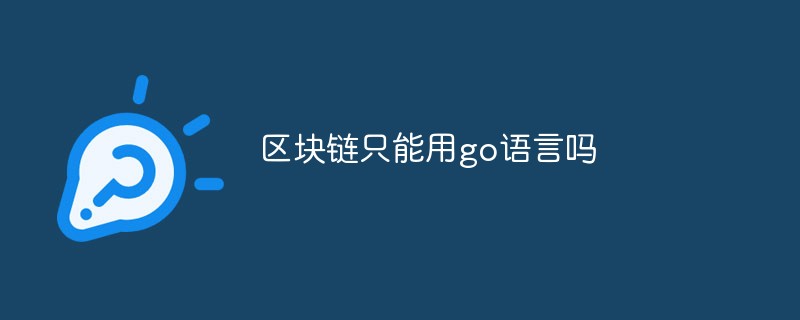 区块链只能用go语言吗Dec 27, 2022 pm 05:25 PM
区块链只能用go语言吗Dec 27, 2022 pm 05:25 PM不是。区块链是一种编程思想,原则上使用任何一种编程语言都可以实现,比如Solidity、C++、C#、Java、javascript、Go都可以实现区块链的开发;区块链技术涉及的面很广,而编程语言只是一种手段,把设计理念用代码呈现出来,做成产品服务用户。
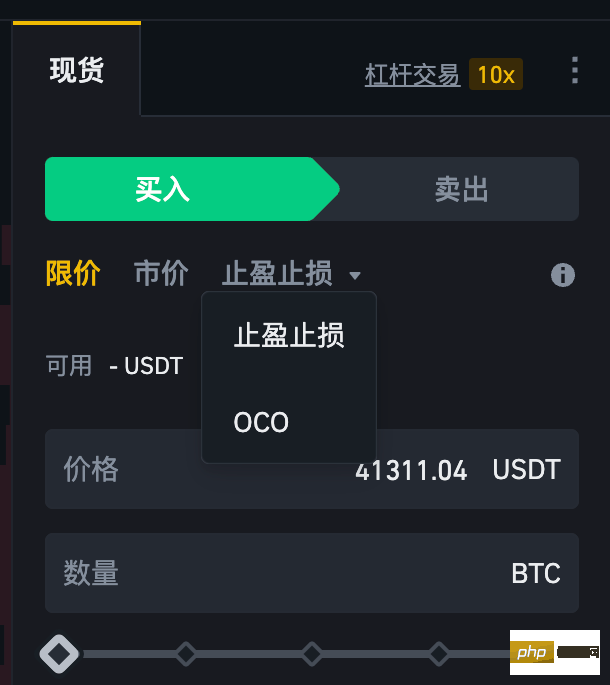 什么是OCO订单?Apr 25, 2023 am 11:26 AM
什么是OCO订单?Apr 25, 2023 am 11:26 AM二选一订单(OneCancelstheOther,简称OCO)可让您同时下达两个订单。它结合了限价单和限价止损单,但只能执行其中一个。换句话说,只要其中的限价单被部分或全部成交、止盈止损单被触发,另一个订单将自动取消。请注意,取消其中一个订单也会同时取消另一个订单。在币安交易平台进行交易时,您可以将二选一订单作为交易自动化的基本形式。这个功能可让您选择同时下达两个限价单,从而有助于止盈和最大程度减少潜在损失。如何使用二选一订单?登录您的币安帐户之后,请前往基本交易界面,找到下图所示的交易区域。点
 go语言能开发区块链吗Jan 03, 2023 pm 01:41 PM
go语言能开发区块链吗Jan 03, 2023 pm 01:41 PM可以开发。区块链是一种编程思想,原则上使用任何一种编程语言都可以实现,比如go语言、Solidity、C++、C#、Java、javascript都可以实现区块链的开发。Go语言是为了解决分布式计算,而区块链是典型的分布式数据存储系统,因此go语言能开发区块链。且Go易学易用,能很好的满足区块链行开发需要的“执行效率高、高并发、跨平台,网络开发要求高”等特点。
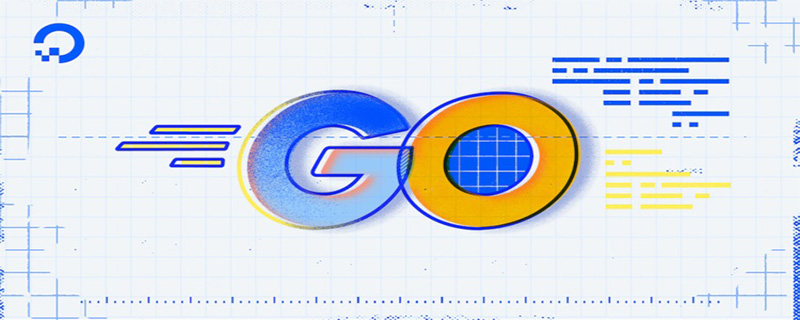 为什么用go语言写区块链Mar 04, 2021 pm 03:42 PM
为什么用go语言写区块链Mar 04, 2021 pm 03:42 PM原因:1、Go语言具有部署简单、性能优秀、并行执行性能好、良好语言设计、内置大量库、团队牛逼等优势。2、以太坊和超级账本都选择使用Go作为开发语言;这两大超级区块链的影响力很大,不仅在生态中占据了大的坑位,事实上还隐性的制定了区块链的标准。
 深入学习区块链的Go语言开发框架Jun 04, 2023 pm 08:01 PM
深入学习区块链的Go语言开发框架Jun 04, 2023 pm 08:01 PM区块链技术的出现,使得数字货币的应用成为可能,也在许多领域得到了广泛应用。随着区块链技术领域的扩大,开发人员对于更好的应用程序编写方式的需求也高涨起来。于是,一个叫做Go语言(简称Golang)的编程语言悄悄兴起,成为了区块链开发人员的最爱。Go语言是谷歌公司开发的一种系统级编程语言,自诞生以来,一直着重强调程序设计的简捷和高效。Go语言的优点包括:静态类型
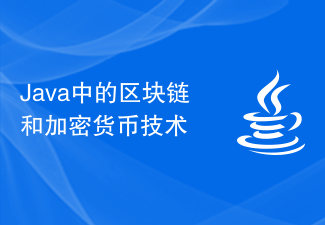 Java 中的区块链和加密货币技术Jun 09, 2023 am 09:56 AM
Java 中的区块链和加密货币技术Jun 09, 2023 am 09:56 AMJava是一种广泛使用的编程语言,它被许多公司和组织用作开发各种应用程序的工具。最近几年来,区块链和加密货币技术在全球范围内引起了大量的关注。Java的灵活性和多功能性使得它成为开发区块链和加密货币应用程序的优秀选择。区块链技术是一种安全的、去中心化的数据库,它可以存储和共享交易记录,而无需任何中央机构的干涉。Java提供了许多区块链开发框架,例如H
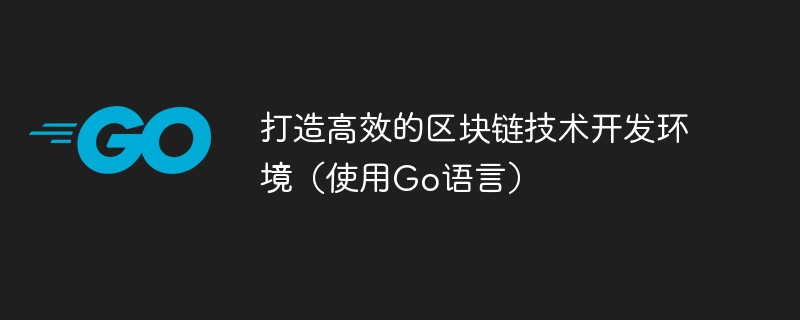 打造高效的区块链技术开发环境(使用Go语言)Jun 05, 2023 am 08:21 AM
打造高效的区块链技术开发环境(使用Go语言)Jun 05, 2023 am 08:21 AM随着区块链技术的发展和应用越来越广泛,有越来越多的人开始参与到区块链技术的开发中来。而要想打造高效的区块链技术开发环境,选择合适的开发语言和工具是非常重要的。Go语言正是一个很好的选择,因为它的性能很高,同时还有很多优秀的开源工具和库,能够大大提高开发效率。下面就来介绍一下如何打造高效的区块链技术开发环境,使用Go语言进行开发。一、选择Go语言在选择开发语言
 如何利用Go语言实现全球唯一的区块链身份标识Jun 04, 2023 pm 03:51 PM
如何利用Go语言实现全球唯一的区块链身份标识Jun 04, 2023 pm 03:51 PM区块链是一种去中心化的分布式账本技术,随着其应用领域的不断扩展,如何保障区块链参与者的身份安全问题也逐渐成为热门话题。本文将介绍如何利用Go语言实现全球唯一的区块链身份标识。一、为什么需要区块链身份标识在现有的互联网世界中,身份验证是一个非常重要的问题。通过用户名和密码等方式,用户可以登录到我门的网站上,从而使用我们的服务。但是,在互联网上,身份验证存在着

Hot AI Tools

Undresser.AI Undress
AI-powered app for creating realistic nude photos

AI Clothes Remover
Online AI tool for removing clothes from photos.

Undress AI Tool
Undress images for free

Clothoff.io
AI clothes remover

AI Hentai Generator
Generate AI Hentai for free.

Hot Article

Hot Tools

Dreamweaver CS6
Visual web development tools

SAP NetWeaver Server Adapter for Eclipse
Integrate Eclipse with SAP NetWeaver application server.

mPDF
mPDF is a PHP library that can generate PDF files from UTF-8 encoded HTML. The original author, Ian Back, wrote mPDF to output PDF files "on the fly" from his website and handle different languages. It is slower than original scripts like HTML2FPDF and produces larger files when using Unicode fonts, but supports CSS styles etc. and has a lot of enhancements. Supports almost all languages, including RTL (Arabic and Hebrew) and CJK (Chinese, Japanese and Korean). Supports nested block-level elements (such as P, DIV),

PhpStorm Mac version
The latest (2018.2.1) professional PHP integrated development tool

Dreamweaver Mac version
Visual web development tools





